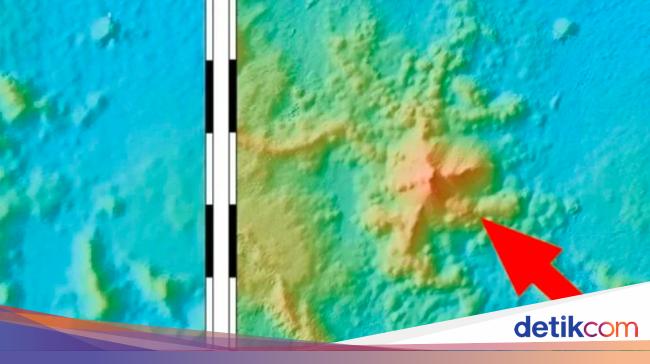Jakarta –
A major seismic event that occurred in May 2018 and was felt throughout the world, gave birth to a new volcano under the sea.
Off the east coast of the island of Mayotte, the giant volcano rises 820 meters from the seabed. Researchers note this is something of an unprecedented advantage before the earthquake that rocked the island in May 2018.
“This is the largest active underwater eruption ever documented,” the researchers wrote in their paper.
This new mountain, thought to be part of the tectonic structure between the East African fissure and Madagascar, is helping scientists understand processes inside Earth that we know relatively little about.
Seismic tremors from the event began on May 10, 2018. Just days later, on May 15, a magnitude 5.8 earthquake struck and shook a nearby island. At first, scientists were confused. However, it didn’t take long to learn that a never-before-seen volcanic event had occurred.
The signal points to a location about 50 kilometers from the east coast of Mayotte, a French territory and part of the volcanic Comoros archipelago sandwiched between the East coast of Africa and the northern tip of Madagascar.
A number of French government agencies sent a team of researchers to examine it. There, appeared a seamount that didn’t exist before. Led by geophysicist Nathalie Feuillet of the University of Paris in France, the scientists have now described their findings in a new paper.
The team began monitoring the area in February 2019. They used multibeam sonar to map an area of 8,600 square kilometers of seafloor. They also placed a network of seismometers on the ocean floor, to a depth of 3.5 kilometers, and combined it with seismic data from Mayotte.
|
Eruption chronology. Photo: Nature Geoscience– |
Between February 25 and May 6 2019, the network detected 17,000 seismic events, from a depth of about 20 to 50 kilometers below the seafloor. This is a very unusual finding, as most earthquakes are much shallower. An additional 84 events were also highly unusual, detected at very low frequencies.
Armed with this data, the researchers reconstructed how the formation of new volcanoes might have occurred. It begins, with magma reservoirs deep in the asthenosphere, the layer of molten mantle that lies just below Earth’s lithosphere.
Beneath the new volcano, tectonic processes may have caused damage to the lithosphere, producing dykes that drain magma from the reservoir up through the crust, generating a swarm of earthquakes in the process. Eventually, this material reaches the ocean floor, where it erupts, producing 5 cubic kilometers of lava and building a new volcano.
The low-frequency events are likely generated by shallower fluid-filled voids in the crust that can be repeatedly excited by seismic strain on faults close to the cavity.
In May 2019, the extrusion volume of new volcanic structures was between 30 and 1,000 times greater than forecast for another deep-sea eruption, making it the most significant underwater volcanic eruption ever recorded.
“The volume and flux of lava emitted during the Mayotte magmatic event is comparable to that observed during eruptions at Earth’s largest hotspots,” the researchers wrote.
“Future scenarios could include a new caldera collapse, an underwater eruption on the upper slope or a land eruption. Large lava flows and cones on the upper slope and Mayotte on land suggest that this has happened in the past.
Since the discovery of a new volcanic ‘building’, an observatory has been established to monitor activity in real time to keep track of the evolution of the eruption and the growth of the mountain.
Watch Videos”Subsequent Disaster Due to Volcanic Eruption Haunts La Palma Residents“
[Gambas:Video 20detik]
(rns/afr)
– .


